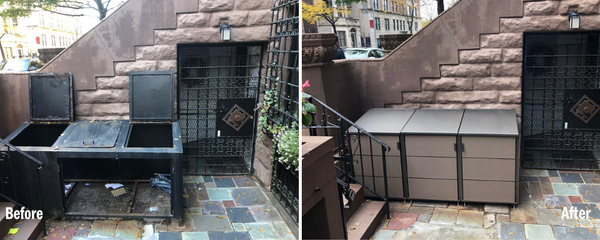Seeing a rat in your home or business is unpleasant to some, and horrifying to others. These silent, fast-moving rodents often dart out of nowhere, making you jump and hesitate to go near the location of the rat encounter. However, rats are not just an unpleasant sight. They are also an incredibly dangerous pest to have in a property, harboring a number of diseases and causing major damage to properties and drains.
The risk of rat infestation has been steadily increasing since the COVID-19 pandemic began, with sightings of these pests soaring as the rodents are forced to seek further afield for food.

In April of 2020, during the early stages of the pandemic, residents in cities across the United States were reporting seeing more rats. This rise in sightings coincided with the closure of restaurants, instantly cutting off the supply of food that had sustained nests for generations. As the lockdown continued, these rats began exploring new areas and properties in the hunt for food, resulting in a rise in infestations.
Unfortunately, as life begins to return to some level of normality, these rats are not disappearing. As lockdown ended, a new pandemic has emerged, a rise in the amount of trash. Portland, Oregon, collected more trash last year than any other year on record, while some 50 billion pieces of litter were collected from our highways and waterways.
These overflowing refuse areas are the perfect breeding ground for rats, giving them an abundance of food and nesting materials. This is a problem that is impacting neighborhoods across the country, but it is the large cities that are being affected the most.
After the unprecedented year we have all experienced, countless things have changed. However, some things have not, and one of those is Chicago being America’s rattiest city! The latest Orkin report placed the windy city at the top of its annual list for the sixth consecutive year.
The bustling metropolis is the perfect home for rats, giving them all of the food and shelter they need. Not only that, but the city also has a higher rate of brown rats, which are known for having greater swimming and climbing ability, making them harder to remove.
In second place was Los Angeles, maintaining its position from the 2019 report. The city's growing population is creating more refuse, while the overcrowding and rise of homelessness are only further enhancing the unsanitary conditions.
The ‘Big Apple’ came in third place once again, with the subways, restaurants, and vast population creating a thriving destination for rats. While rats are most commonly nocturnal animals, every New Yorker will know just how common it is to see these pests running around during the daylight, too.
According to Orkin, the top ten rattiest cities in America are:
Have you spotted rats in your trash? Here at Citibin, we design and manufacture enclosures for trash that are engineered to keep out rats. To test the efficacy of our solution, we baited our trash enclosures with double-sausage pizza and waited to see if the infamous #PizzaRats could break in.
Watch our fun video to see the experiment's result.
From our Standard and XL Bins to our marine-grade aluminum trash and recycling options, we offer a wide range of solutions for your home. Want to find out more? Check out our full collection here.


